Massachusetts is one of the smallest states in the country but still contains over 300 bird species. Many are common, like ducks, cardinals, and doves, but this tiny state also features some unique birds you may not find anywhere else. Check out nine must-see birds in Massachusetts and discover where they live, what they eat, and how to identify them.
Cedar Waxwing
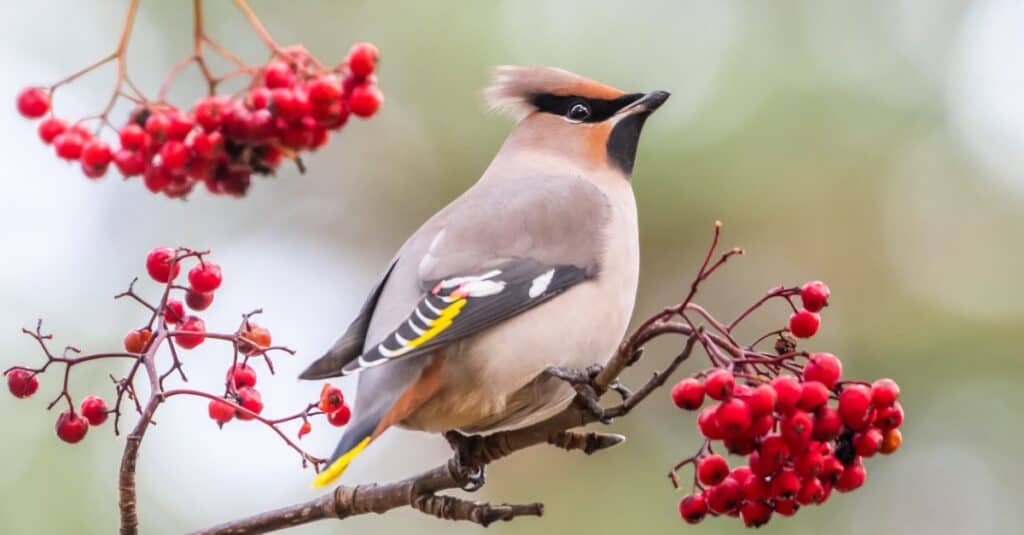
The silky sheen of the feathers set the cedar waxwing apart from other brown birds. These nomads are permanent residents in Massachusetts.
©iStock.com/hannurama
Range and Habitat: The cedar waxwing is relatively nomadic, but they are permanent residents in Massachusetts. Populations that breed in Canada will move into the Southern United States and Mexico during winter. These birds are familiar in deciduous and coniferous woodlands along streams, but you can also spot them in fields and grasslands.
Appearance: This species is famous for its smooth plumage and waxy wing feather tips. They also have large heads with crests that often lay flat. Their plumage is a brown, gray, and pale yellow, with bright red wax tips.
Diet: They primarily eat fruits year-round but will supplement their diet with insects during summer. They get their name from their favorite fruit: cedar berries.
Vocalizations: Cedar waxwings emit high-pitched trills and sighing whistles.
Nests: They form a loose open grass cup placed in a tree fork.
American Woodcock
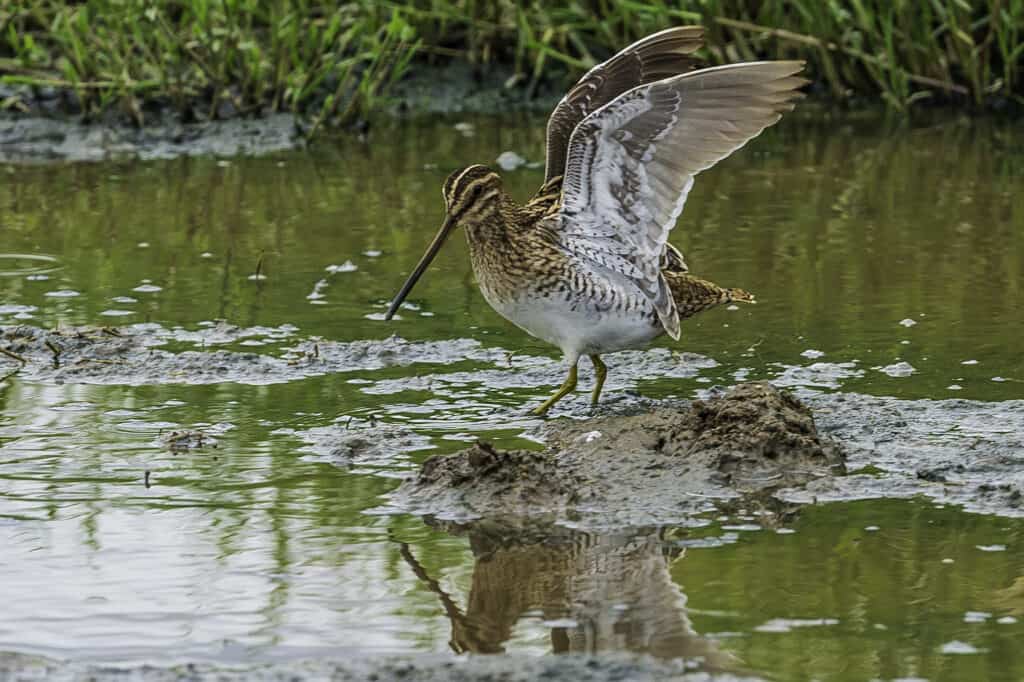
The American woodcock is common in Massachusetts during the breeding season.
©iStock.com/Gerald Corsi
Range and Habitat: The American woodcock is a common breeding bird in Massachusetts. After breeding in the Northeast, this species winters in the Southeast. They place their nests in young deciduous forests and old fields.
Appearance: This short and plump bird appears to have no neck and a very long, straight bill. Their plumage is meant for camouflage, featuring light brown, grayish-brown, buff, and black.
Diet: They eat earthworms and other soil-dwelling insects, like ants, beetles, flies, and millipedes.
Vocalizations: This species has buzzy nasal calls.
Nests: A scrape in the ground lined with dead leaves works as a nest.
Harlequin Duck
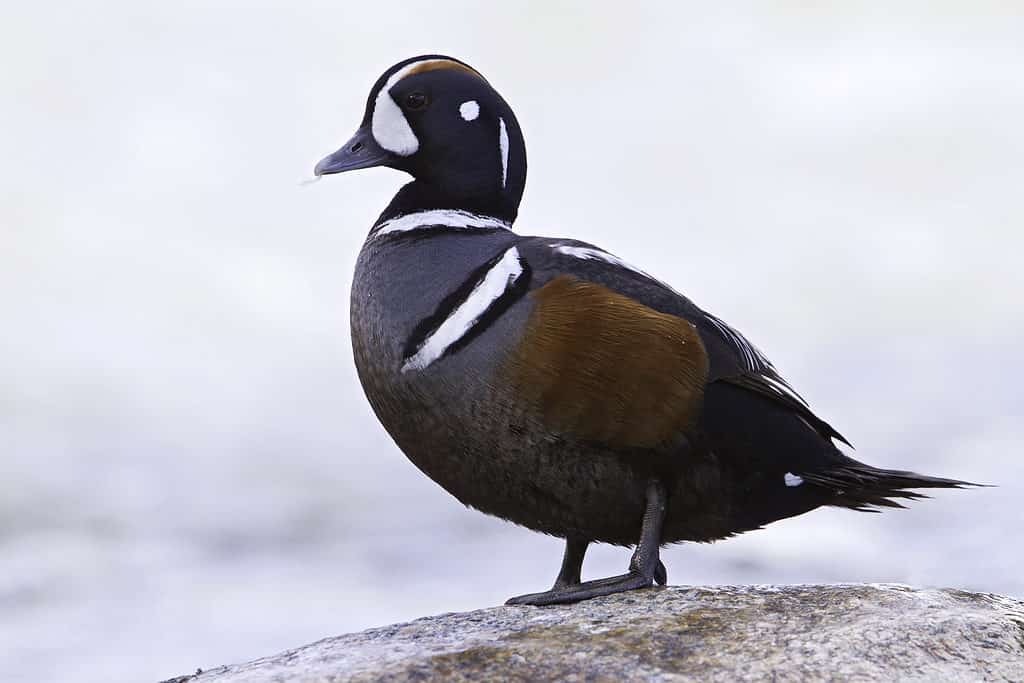
The Harlequin duck winters in Massachusetts along the coast near rocky shorelines.
©iStock.com/AGAMI stock
Range and Habitat: The Harlequin duck spends winters along the Massachusetts coast and breeds in Canada, Greenland, and some parts of the Northwestern United States. During winters in the East, you can find them along rocky coastal shorelines resting on boulders and large rocks.
Appearance: They are small, compact ducks with rounded heads and steep foreheads. They have elaborate markings and feature colors in blue, red, gray, black, and white.
Diet: On their wintering grounds, they eat small fish and tidal marine invertebrates, like crabs, barnacles, and mussels.
Vocalizations: Squeaks and low whistles are their songs.
Nests: Their nest is a shallow depression hidden under bushes near water.
Snowy Owl
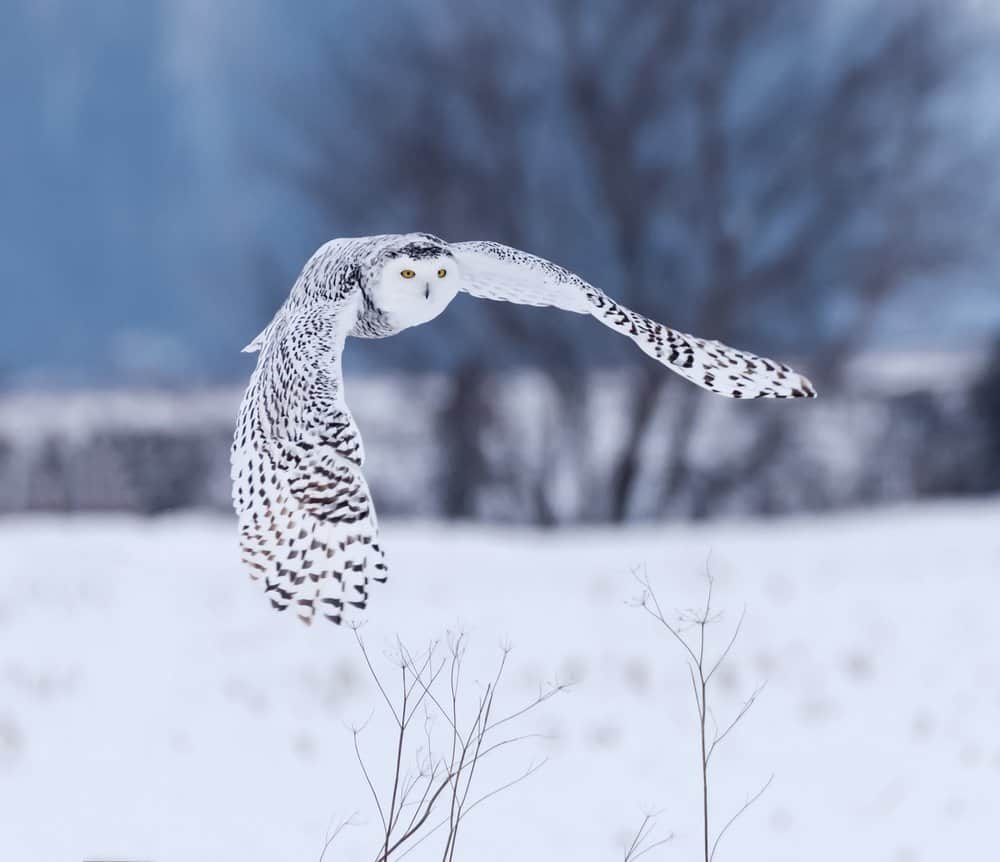
Snowy owls spends winters in the Northeastern United States, where you can find them in treeless open spaces.
©FotoRequest/Shutterstock.com
Range and Habitat: The snowy owl breeds north of the Arctic Circle and winters across Canada and parts of the Northeastern United States, including Massachusetts. Look for them sitting atop fence posts and hay bales in treeless wide, open spaces.
Appearance: They are very large, bulky owls with rounded heads. Their plumage is snow-white with dark brown markings. Females tend to appear more salt-and-pepper, while males are paler. They have bright yellow eyes.
Diet: They primarily eat small mammals and birds. Lemmings and waterfowl are their favorite, but their diet can vary widely depending on availability.
Vocalizations: Their calls are low, rasping hoots.
Nests: They build nests in a depression on a raised mound or ridge.
Saltmarsh Sparrow
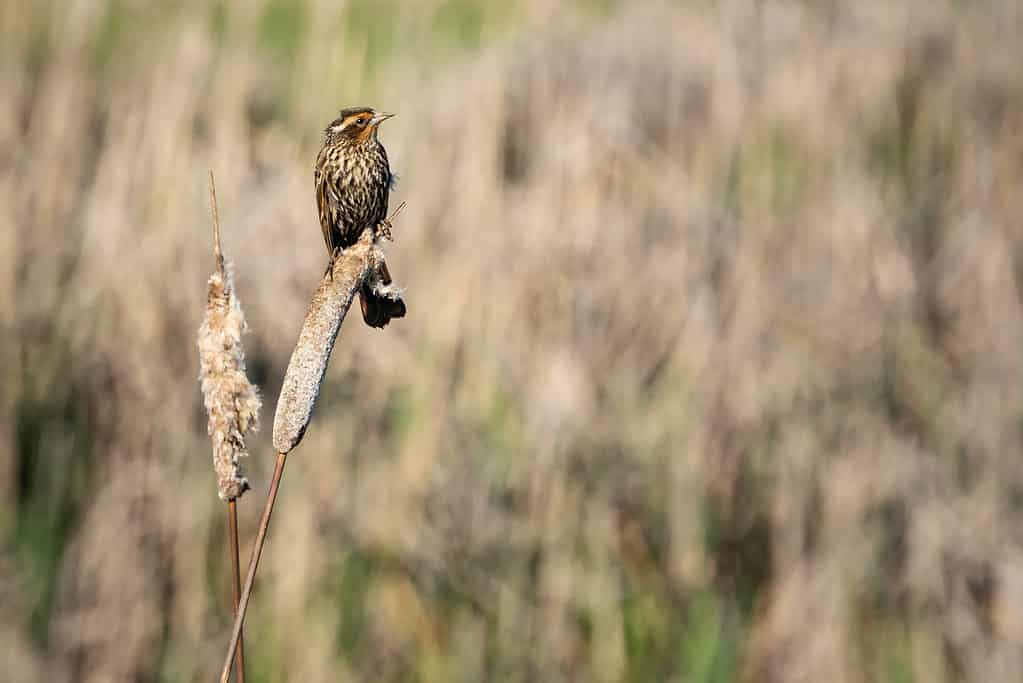
Saltmarsh sparrows live all year in Southern Massachusetts and breed along the northern coast. You can find them in tidal saltmarshes.
©iStock.com/wirestock
Range and Habitat: The saltmarsh sparrow lives year-round along the Southern Massachusetts coastline and breeds along the northern coast. They spend winters in the Southeast. They live strictly on tidal saltmarshes throughout the year.
Appearance: They are small sparrows with round bellies and flat heads. They are grayish-brown with heavy streaking with buffy breasts and orange faces.
Diet: They mainly eat larval insects, amphipods, and spiders. But they will also consume marsh plant seeds.
Vocalizations: These birds make quiet, wheezy trills.
Nests: A bulky open grass cup in the marsh near standing grass
Least Bittern
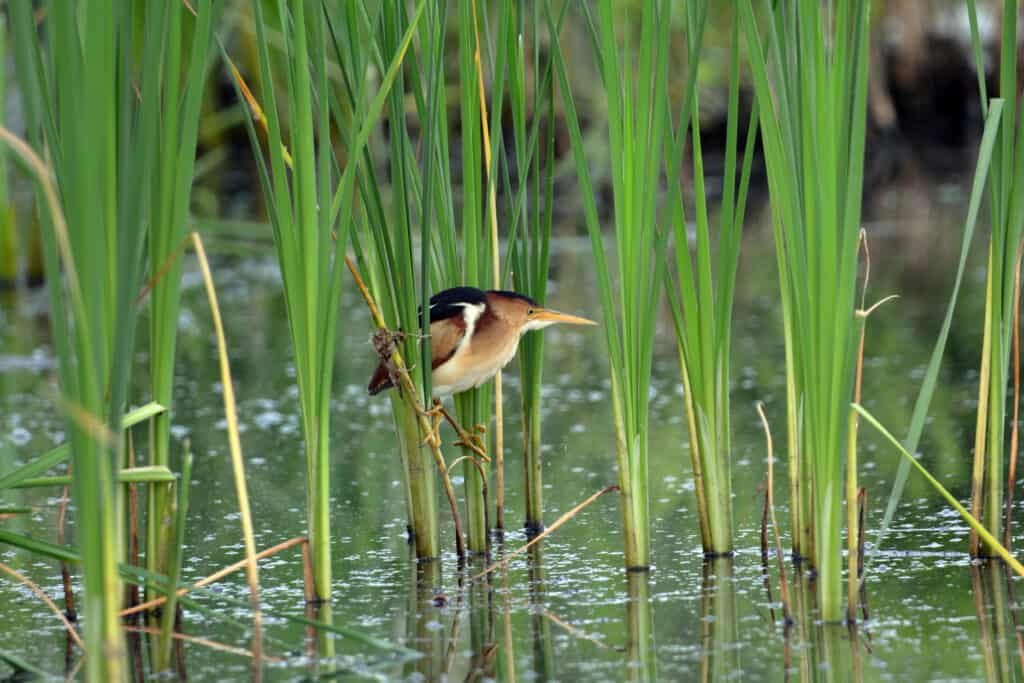
You can find the least bittern in Massachusetts during spring and summer, nesting in brackish and freshwater marshes with tall aquatic vegetation.
©iStock.com/Carol Hamilton
Range and Habitat: Least bitterns are breeding birds in Massachusetts and across most of the Eastern United States. They migrate through Mexico and winter in Central America. Some populations live year-round in South America and the West Indies. They nest in brackish and freshwater marshes with cattails and other tall aquatic vegetation.
Appearance: This small, humpbacked heron has a long, dagger-like bill. Their plumage is black, brown, buff, white, and chestnut. And they feature yellow feet, legs, and beaks.
Diet: They mainly eat small fish, but may also consume frogs, snakes, salamanders, mice, and crustaceans.
Vocalizations: Listen carefully for their quiet coos and ticking sounds.
Nests: Their nest is a platform created with marsh vegetation and is well-hidden.
Mute Swan

Mute swans can be very aggressive in defense of their nests and are highly protective of their mate and offspring.
©Arte foto/Shutterstock.com
Range and Habitat: The mute swan lives permanently along the Southern Massachusetts coast. They have scattered nonmigratory populations in the Northeast. They live in many aquatic habitats, ranging from lakes to estuaries and farm ponds.
Appearance: These are very large swans with long necks, black skin on their face, and bright orange bills. Their plumage is all white.
Diet: These birds eat aquatic vegetation, fish, frogs, snails, mollusks, and insects. Their plant diet consists of seagrasses, algae, and agricultural grains.
Vocalizations: They have hoarse, muffled trumpets (they are not mute, despite their name).
Nests: Their nests are plant material mounds placed on the shoreline or small islands.
Piping Plover

Piping plovers breed in Massachusetts. You can find them in marshes, shores, bays, and islands.
©iStock.com/BrianEKushner
Range and Habitat: The piping plover is a breeder of Massachusetts sandy beaches. After breeding in the Northeast, the Great Plains, and Great Lakes, this species migrates to the Southeast coasts for winter. They nest in marshes, ocean shores, bays, and spoil islands.
Appearance: These birds are small, round, and stocky. And they are grayish brown above and white below, with dark bands around their necks and yellow legs and bills.
Diet: They eat marine invertebrates, like worms, crustaceans, water beetles, and snails.
Vocalizations: This species emits high-pitched piping calls and throaty rattles.
Nests: They nest on the open ground slightly away from the water in a shallow scrape in the sand.
Ruffed Grouse
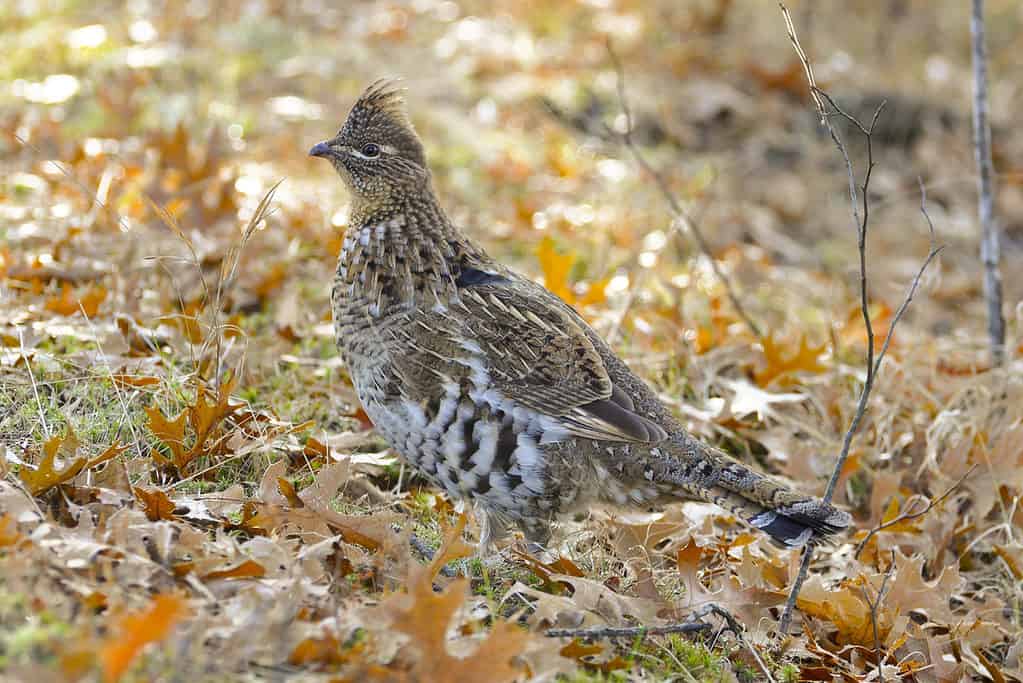
The ruffed grouse lives year-round in Massachusetts, where they inhabit groves and deciduous forests.
©iStock.com/SteveOehlenschlager
Range and Habitat: The ruffed grouse lives year-round in Alaska, Canada, the Northwest, and the Northeast, including Massachusetts. They inhabit mixed groves and deciduous forests, especially with scattered trees and dense undergrowth.
Appearance: These small game birds have triangular crests and short legs. Their plumage has intricate markings in grayish-brown or reddish-brown and is meant for camouflage.
Diet: They primarily eat vegetation, such as leaves, buds, and shrubs. They may also consume acorns and fruits during the fall.
Vocalizations: These birds have nasal squeals and hiss-like calls.
Nests: Their nests are shallow depressions lined with leaves and well-hidden under brush.
The photo featured at the top of this post is © iStock.com/tmarko
Thank you for reading! Have some feedback for us? Contact the AZ Animals editorial team.






